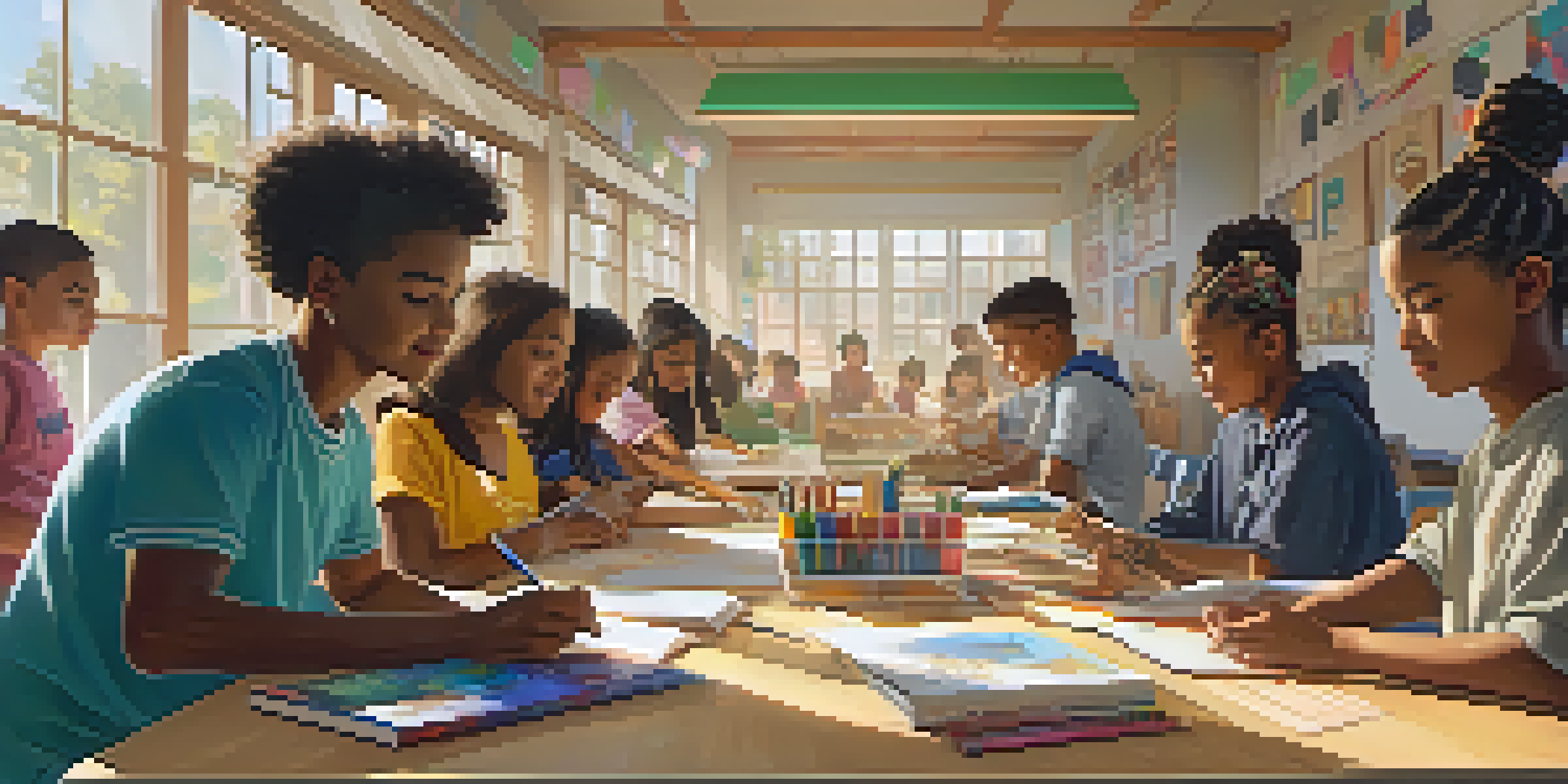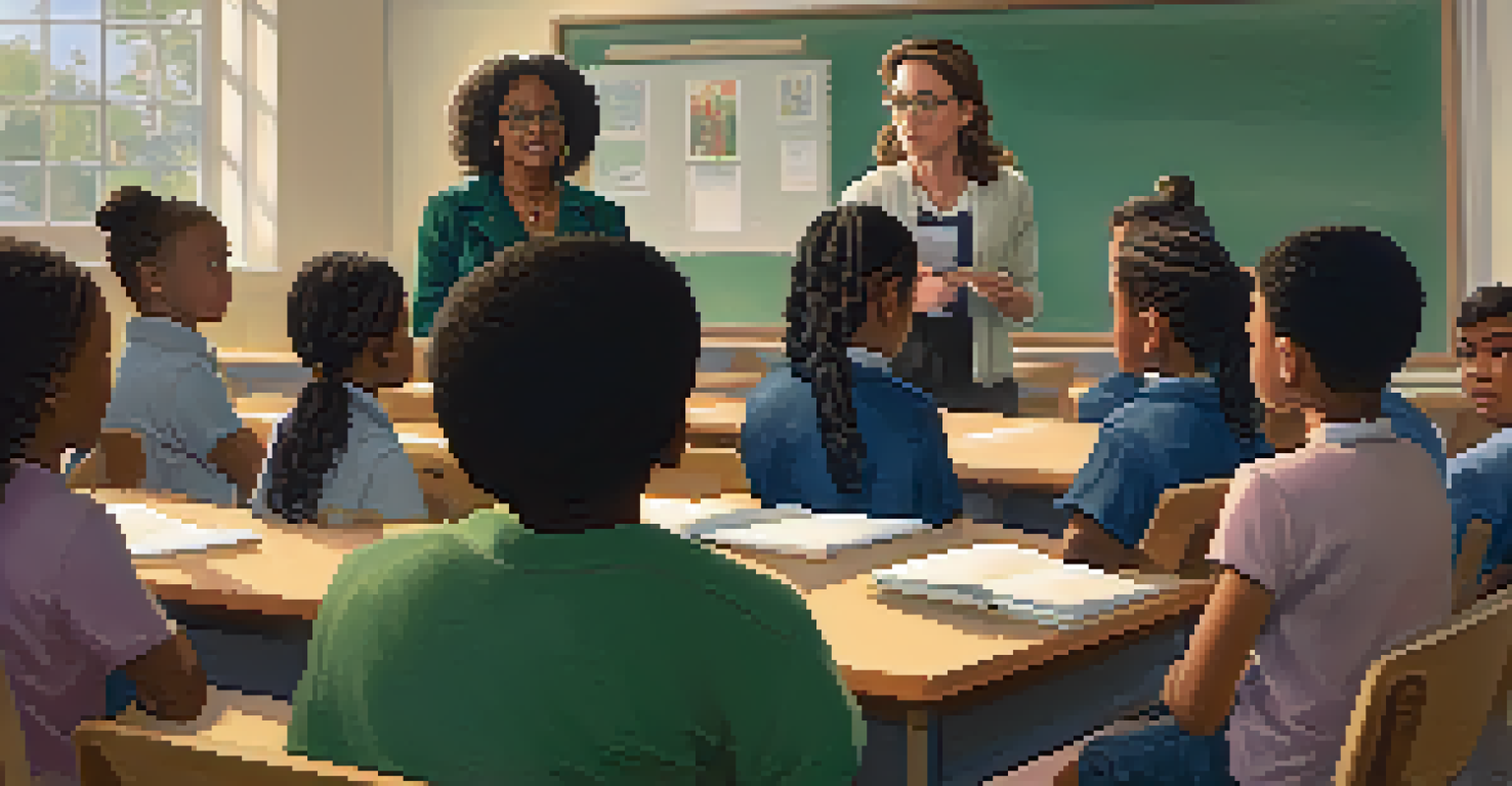The Importance of Representation in Educational Materials

Understanding Representation in Education
Representation in educational materials refers to the inclusion of diverse voices, cultures, and perspectives. It’s about ensuring that students see themselves reflected in what they learn, whether it's through stories, historical figures, or scientific contributions. This representation is crucial in shaping a child's understanding of the world and their place in it.
Diversity is being invited to the party; inclusion is being asked to dance.
When educational materials lack representation, it can lead to feelings of isolation and disconnection among students. Imagine reading a history book that only features one narrative while ignoring other significant cultures and contributions. This not only skews students' understanding of history but can also diminish their self-worth and aspirations.
On the other hand, when students find relatable characters and stories, it fosters a sense of belonging and encourages engagement. For example, including texts that feature diverse authors or characters helps students from various backgrounds feel valued and understood, promoting a more inclusive classroom environment.
Why Representation Matters for All Students
Representation is not only beneficial for marginalized groups; it enriches the educational experience for all students. By exposing everyone to a variety of perspectives, students develop empathy and a broader worldview. This is crucial in today’s global society, where collaboration and understanding across cultures have become essential.

For instance, when students learn about different cultures and histories, they can better appreciate the complexities of societal issues. This understanding can lead to more informed, compassionate citizens who are better equipped to tackle real-world challenges. Representation, therefore, is not just about equity; it’s about enhancing the educational experience for everyone.
Importance of Diverse Representation
Inclusion of diverse voices in educational materials helps students feel valued and fosters a sense of belonging.
Moreover, studies have shown that diverse curricula can improve critical thinking skills. When students are challenged to consider multiple viewpoints, they learn to analyze information more deeply and develop their own informed opinions. This skill is invaluable, as it prepares them for a world that is rich in diversity and complexity.
The Impact of Lack of Representation
When educational materials fail to represent diverse groups, the consequences can be significant. Students may feel marginalized or undervalued, leading to disengagement and lower academic performance. For example, a student from an underrepresented background might struggle to connect with lessons that don’t reflect their experiences or culture.
Education is the most powerful weapon which you can use to change the world.
Additionally, a lack of representation can perpetuate stereotypes and biases. When students only see one type of person depicted in various roles, it reinforces narrow views of what individuals from different backgrounds can achieve. This can limit aspirations and contribute to systemic inequities that persist beyond the classroom.
Ultimately, this lack of representation denies students the opportunity to learn from a full spectrum of stories and ideas. By not exposing them to diverse narratives, we risk creating a generation that does not fully appreciate the rich tapestry of human experience, which is essential for fostering a more inclusive society.
Creating Inclusive Educational Materials
To foster greater representation, educators and content creators must consciously include diverse perspectives in their materials. This involves seeking out voices and stories from various cultures, genders, and backgrounds. Collaboration with diverse educators and community members can provide valuable insights into what representation should look like in curricula.
Moreover, educators should actively evaluate existing materials for bias and gaps in representation. It’s essential to ask questions like, 'Whose stories are being told?' and 'Who is missing?' This reflective practice can help teachers select resources that offer a more balanced view of the world.
Benefits for All Students
Exposure to varied perspectives enhances empathy and critical thinking skills, enriching the educational experience for everyone.
Lastly, incorporating student feedback is vital. By engaging students in discussions about the materials they use, educators can gain a deeper understanding of what resonates with learners and what falls short. This collaborative approach not only enhances representation but also empowers students to take an active role in their education.
The Role of Teachers in Promoting Representation
Teachers play a pivotal role in promoting representation within educational settings. They have the power to curate materials that reflect diverse perspectives and challenge the status quo. By consciously selecting texts and resources that include varied voices, teachers can create a learning environment that values inclusivity.
Moreover, teachers can facilitate discussions that allow students to explore and appreciate different backgrounds. By encouraging open dialogue about representation, teachers help students understand its importance and foster a culture of respect and empathy. This not only enriches academic discussions but also builds community within the classroom.
Additionally, teachers can serve as role models for their students. By demonstrating a commitment to diversity in their teaching practices, they inspire students to appreciate differences and advocate for representation in their own lives. This influence can have lasting effects, shaping the next generation of leaders and changemakers.
Challenges in Achieving Representation
Despite the clear benefits of representation, achieving it in educational materials can be challenging. One major obstacle is the availability of diverse resources. Many curricula are still dominated by traditional narratives, making it difficult for educators to find inclusive materials that accurately reflect various cultures and experiences.
Another challenge is the resistance to change. Some educators may feel overwhelmed by the task of revamping their materials or may not recognize the importance of representation. This reluctance can stem from a lack of awareness or inadequate training on how to incorporate diverse perspectives effectively.
Teachers' Key Role in Inclusion
Educators play a crucial role by curating diverse materials and facilitating discussions that promote understanding and respect.
Overcoming these challenges requires a collective effort from educators, policymakers, and communities. By advocating for more inclusive curricula and investing in diverse resources, we can work towards creating educational environments where all students feel represented and valued.
The Future of Representation in Education
Looking ahead, the future of representation in education appears promising, yet requires ongoing commitment. With growing awareness of its importance, more educators and institutions are prioritizing inclusivity in their materials. This shift reflects a broader societal push toward equity and representation, which is increasingly recognized as essential for effective learning.
Additionally, advancements in technology offer new opportunities for representation. Digital resources and platforms provide access to a wealth of diverse content that can enhance traditional curricula. This flexibility allows educators to incorporate varied perspectives seamlessly, making it easier to create an inclusive learning environment.

Ultimately, fostering representation in educational materials is a continual journey. By remaining engaged and proactive, educators can help shape a future where every student sees themselves reflected in their learning experiences, paving the way for a more inclusive and understanding society.